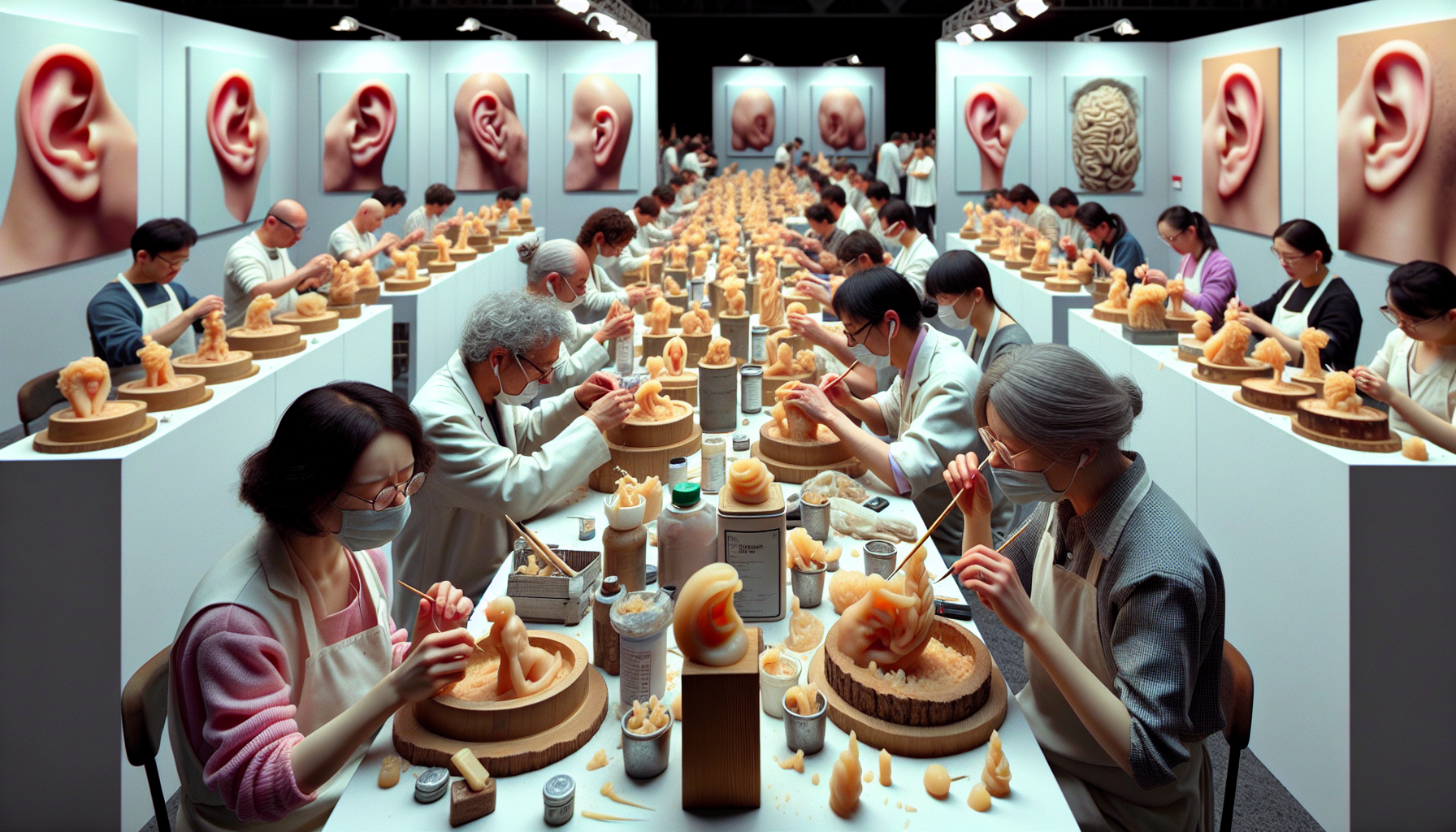
Competitive Ear Wax Sculpting: From Ear Canals to Canvas, the Unsung Art of Auditory Debris
Competitive Ear Wax Sculpting is an art form that has been around for centuries, yet is often overlooked. It is a unique and creative way to express oneself through the manipulation of ear wax. Ear wax is a natural substance produced by the body to protect the ear canal from dust, dirt, and other foreign particles. It is also a great medium for sculpting, as it can be molded and shaped into a variety of shapes and forms. Competitive Ear Wax Sculpting is a fun and creative way to express oneself and to show off one’s artistic skills. It is a great way to challenge oneself and to create something unique and beautiful. From ear canals to canvas, Competitive Ear Wax Sculpting is an art form that deserves to be celebrated and appreciated.
The History of Competitive Ear Wax Sculpting: How the Ancient Art of Ear Wax Sculpting Has Evolved Over Time
Ear wax sculpting is an ancient art form that has been practiced for centuries. It is believed to have originated in India, where it was used as a form of spiritual healing. The practice of ear wax sculpting has evolved over time, and today it is a popular competitive sport.
In its earliest form, ear wax sculpting was used as a form of spiritual healing. It was believed that the act of sculpting ear wax could help to release negative energy and promote healing. This practice was often done in conjunction with other forms of spiritual healing, such as meditation and prayer.
In the 19th century, ear wax sculpting began to be used as a form of entertainment. People would gather to watch as skilled sculptors created intricate designs out of ear wax. This practice eventually evolved into a competitive sport, with competitions being held in various parts of the world.
Today, competitive ear wax sculpting is a popular sport. Competitions are held in many countries, and the rules and regulations vary from country to country. Generally, competitors are judged on the complexity and creativity of their sculptures. The sculptures are usually made from beeswax, which is heated and then molded into the desired shape.
Competitive ear wax sculpting has come a long way since its humble beginnings. It is now a popular sport that is enjoyed by people of all ages. Whether you are a beginner or an experienced sculptor, there is something for everyone in this ancient art form.
The Science Behind Ear Wax Sculpting: Exploring the Chemistry and Physics of Ear Wax

Ear wax sculpting is an art form that has been practiced for centuries, but the science behind it is only now being explored. Ear wax, or cerumen, is a complex mixture of lipids, proteins, and other compounds that is produced by the glands in the ear canal. It serves to protect the ear from dust, dirt, and other foreign particles, as well as to lubricate the ear canal.
The chemistry of ear wax is quite complex. It is composed of a variety of lipids, including cholesterol, fatty acids, and wax esters. These lipids are produced by the sebaceous glands in the ear canal and are then mixed with sweat and other secretions to form the ear wax. The proteins found in ear wax are mostly keratin and albumin, which help to bind the lipids together.
The physics of ear wax sculpting is also quite interesting. The wax is malleable and can be shaped into a variety of shapes and designs. This is due to the fact that the wax is composed of a variety of different compounds, each with its own melting point. As the wax is heated, the different compounds melt at different temperatures, allowing the wax to be shaped and molded.
The art of ear wax sculpting is a fascinating one, and the science behind it is just as interesting. By understanding the chemistry and physics of ear wax, we can better appreciate the art form and the intricate designs that can be created.
The Art of Ear Wax Sculpting: Examining the Creative Process of Crafting Ear Wax Masterpieces
Ear wax sculpting is an art form that has been around for centuries, yet it is still relatively unknown. This article will explore the creative process of crafting ear wax masterpieces, from the materials used to the techniques employed.
The materials used in ear wax sculpting are simple and straightforward. Ear wax is the primary material, and it can be collected from the ear canal of any person. It is important to note that the wax should be clean and free of debris. Other materials used in ear wax sculpting include a variety of tools such as tweezers, toothpicks, and needles.
The techniques used in ear wax sculpting are varied and creative. The most common technique is to use a needle to carve the wax into the desired shape. This technique requires patience and skill, as the wax must be manipulated carefully to create the desired effect. Other techniques include using tweezers to shape the wax, or using a toothpick to create intricate details.
The creative process of crafting ear wax masterpieces is a unique and rewarding experience. It requires patience, skill, and a keen eye for detail. The end result is a beautiful and unique piece of art that can be enjoyed for years to come.
Ear wax sculpting is an art form that is accessible to anyone with the right materials and techniques. It is a great way to express creativity and to create something unique and beautiful. With a little practice and patience, anyone can become an ear wax sculptor and create their own masterpieces.
Conclusion
Competitive Ear Wax Sculpting is an art form that is often overlooked and underappreciated. It is a unique and creative way to express oneself and to explore the possibilities of what can be done with ear wax. It is a fascinating and unique form of art that can be enjoyed by all. With the right tools and techniques, anyone can create beautiful and intricate sculptures from ear wax. Competitive Ear Wax Sculpting is an art form that deserves more recognition and appreciation.
You may also like
Archives
Calendar
| M | T | W | T | F | S | S |
|---|---|---|---|---|---|---|
| 1 | 2 | 3 | ||||
| 4 | 5 | 6 | 7 | 8 | 9 | 10 |
| 11 | 12 | 13 | 14 | 15 | 16 | 17 |
| 18 | 19 | 20 | 21 | 22 | 23 | 24 |
| 25 | 26 | 27 | 28 | 29 | 30 | 31 |

Leave a Reply